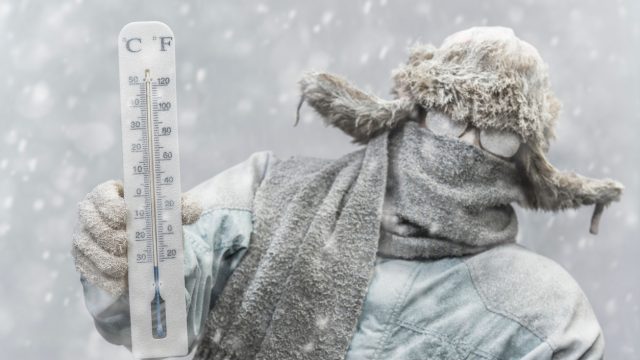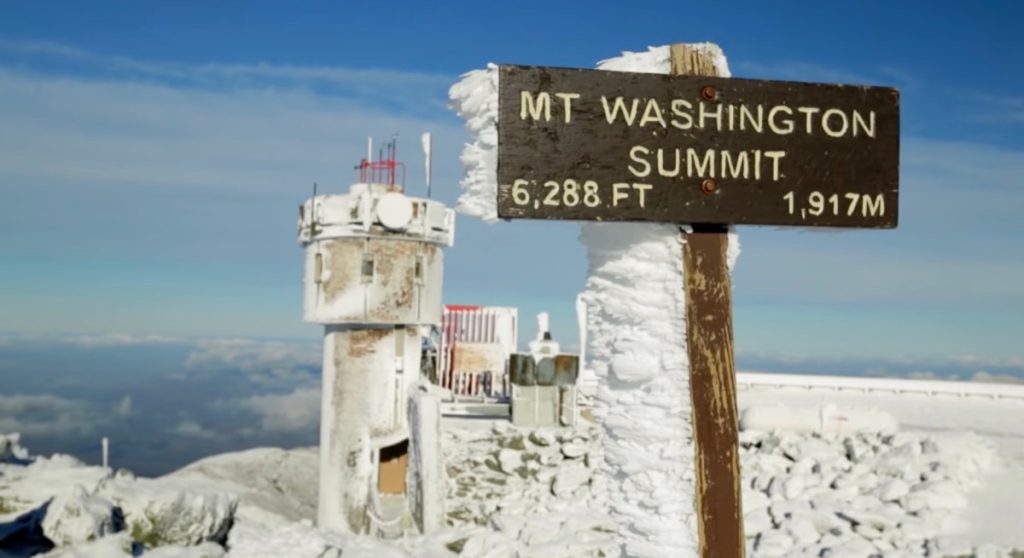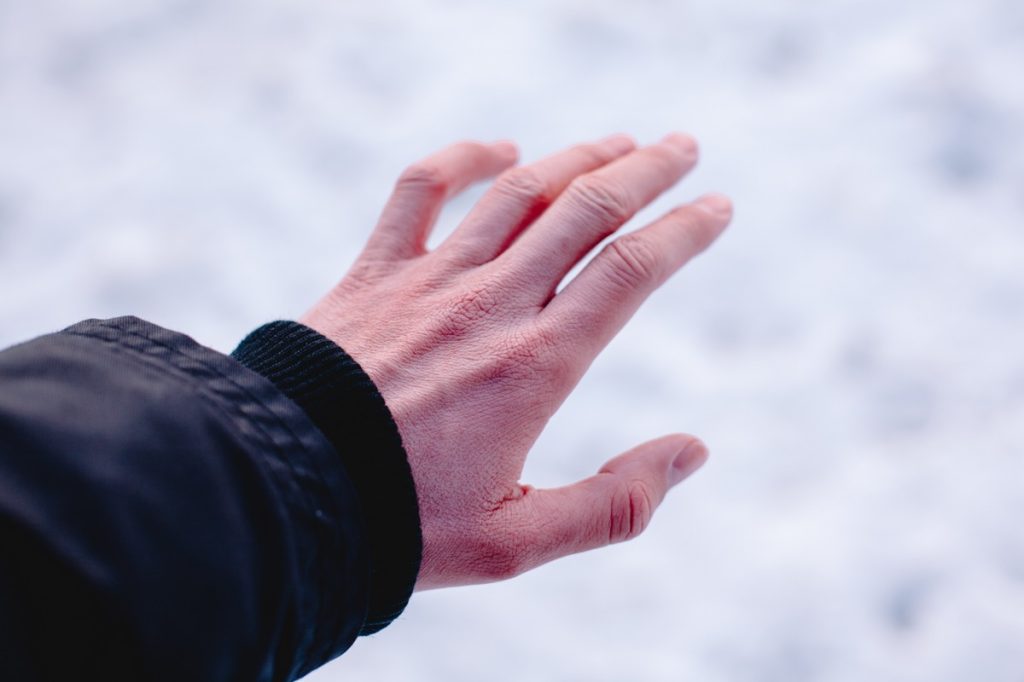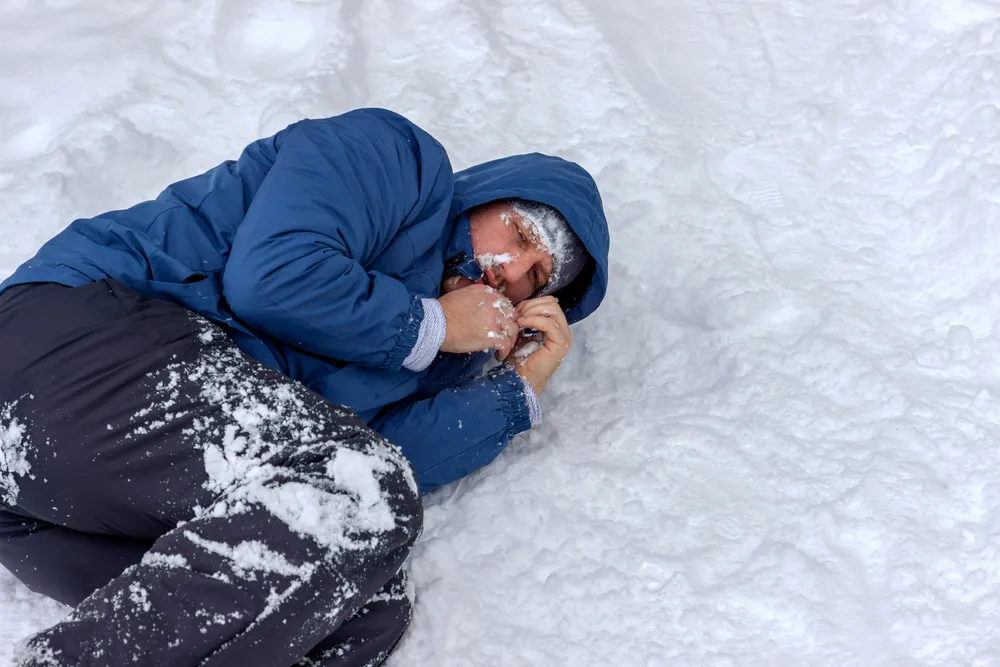New Hampshire Just Recorded the Coldest-Ever U.S. Temperature—Could You Survive It?

Depending on where you live, you might think you’re prepared for all the cold temperatures and extreme weather that come during winter. Of course, some years can be worse than others, with unusually high amounts of snowfall, cold snaps that won’t seem to quit, or freezing temperatures reaching areas where they’re not all that common. And while this winter has already been shaping up to be one for the history books, scientists announced that the coldest-ever temperature in the U.S. was just recorded in New Hampshire. Read on to learn more about the positively frigid event—and to see if you could survive in such extreme cold.
READ THIS NEXT: The Next Total Solar Eclipse Will Be the Last Until 2044, NASA Says.
A recent polar vortex sent temperatures well below zero in parts of the Northeast.

Even as an area that is accustomed to freezing winter weather, the Northeast prepared itself for frigid temperatures last week as a major polar vortex hit the region early on the morning of Feb. 3. The approaching extreme conditions led the National Weather Service (NWS) to issue wind chill warnings affecting more than 15 million people, while state officials urged people to stay indoors until the following day, CNN reported.
As temperatures plunged throughout the day and into the following morning, cities in the region reported their own historic lows. Boston, Massachusetts dropped to minus 10 degrees Fahrenheit on the morning of Feb. 4, beating the previous daily record low of minus two and marking the first double-digit negative temperature in the city since 1957, CNN reported. Nearby Worcester also saw double-digit lows as the mercury dropped to minus 13 degrees Fahrenheit, beating the previous daily record of minus four. And Providence, Rhode Island, sunk to a new daily record low of minus nine degrees Fahrenheit.
But while cities throughout New England fell into a deep freeze, temperatures in areas to the north made them look downright balmy.
Last weekend, scientists recorded the coldest-ever temperature in the U.S. during extreme weather in New Hampshire.

The Mount Washington Observatory in New Hampshire is no stranger to some of the most extreme weather conditions in the nation. And overnight on Feb. 3, scientists crewing the legendary weather station were afforded front-row seats as they braved the elements and recorded what is likely the coldest temperature ever felt in the U.S.
Instruments picked up a new record-low wind chill temperature of minus 108, shattering the previously recorded lowest temperature on the famously frigid summit of minus 102.7 degrees set in 2004, The Washington Post reports. Scientists at the station said that sustained winds at the time were nearly 100 miles per hour, with gusts up to 127 miles per hour.
The NWS also took note of the conditions leading up to the record drop, tweeting on Friday evening: “Right now Mount Washington is living up to the reputation of having the worst weather in the world.” But even those who counted themselves lucky to take part in the historic event admitted it wasn’t exactly a comfortable experience.
“The winds were so strong that I fell over at least once that night. I was thankful that I was able to make it back to the observatory,” Alexis George, meteorologist and weather observer for Mount Washington Observatory, told CNN. “It’s not something you get used to very easily because it’s a very loud experience. It almost sounds like a freight train.”
RELATED: For more up-to-date information, sign up for our daily newsletter.
Cold conditions don’t need to be record-breaking to be dangerous for frostbite or hypothermia.

Clearly, the extreme conditions recorded at the highest peak in the Northeast are by definition some of the most inhospitable imaginable. But to get an idea of just how bad things were, scientists explained that even their best preparations fell a little short.
“Any exposed skin, even if it’s just like a millimeter of exposed skin, sort of feels like a bee stinging you or like a low-grade sunburn, so definitely not very pleasant up here,” Francis Tarasiewicz, a weather observer who was part of the three-person team on the record cold night, told CNN.
But temperatures don’t have to drop to record lows for them to become dangerous to your health. According to the NWS, a wind chill of just minus 20 degrees Fahrenheit can cause frostbite in just 30 minutes, which “causes a loss of feeling and a white or pale appearance in extremities, such as fingers, toes, ear lobes or the tip of the nose.” This time also drops drastically as wind speed picks up, shortening to 17 minutes with winds at just five miles per hour.
However, a drop in body temperature below 95 degrees Fahrenheit—also known as hypothermia—can be deadly. Anyone who isn’t dressed adequately in temperatures of minus 30 Fahrenheit could begin to experience it in as quickly as 10 minutes, Robert Glatter, MD, an emergency physician at Lenox Hill Hospital in New York City, told Live Science. Temperatures between minus 40 and minus 50 Fahrenheit shorten the window to just five to seven minutes.
It’s important to know the signs of frostbite and hypothermia and to seek medical attention when they happen.

Besides staying indoors and avoiding prolonged exposure to cold temperatures, the best prevention for frostbite and hypothermia comes from adequately dressing for the elements. According to NWS, layers of loose-fitting, lightweight clothing will trap air between fabrics, providing the insulation needed to keep you warmer for longer. It’s also best to choose synthetic fabrics for outer layers over cotton, which can become wet and cool you down very quickly. The agency suggests wearing a hat, covering your mouth to help protect your lungs, wearing mittens instead of gloves, and keeping dry and out of the wind whenever possible.
The NWS also warns that anyone who displays signs or symptoms of frostbite should seek out medical attention immediately. Those suffering from hypothermia are particularly vulnerable and usually show signs of “shivering, memory loss, disorientation, incoherence, slurred speech, drowsiness, and apparent exhaustion.”
Anyone who can’t get medical care in this situation should slowly start warming the body from its core and not the arms and legs as it can lead to heart failure, according to the Centers for Disease Control and Prevention (CDC). The agency suggests using your body heat to help someone suffering and wrapping the head and neck in a warm, dry blanket. It’s also advised not to provide any kind of coffee, hot beverage, food, alcohol, or drugs to someone in this state until they recover.